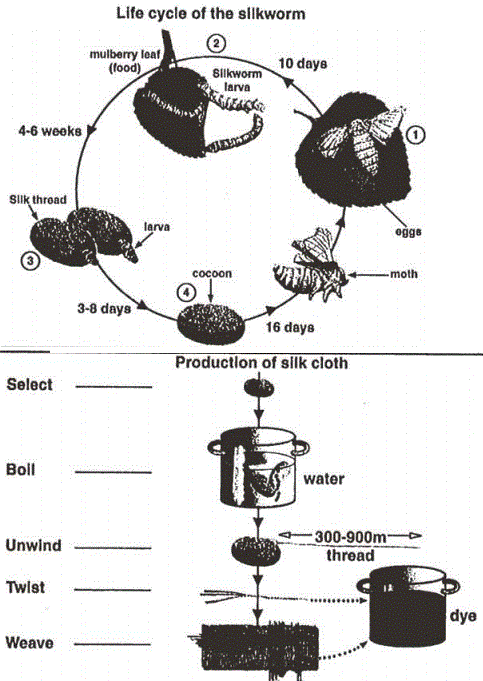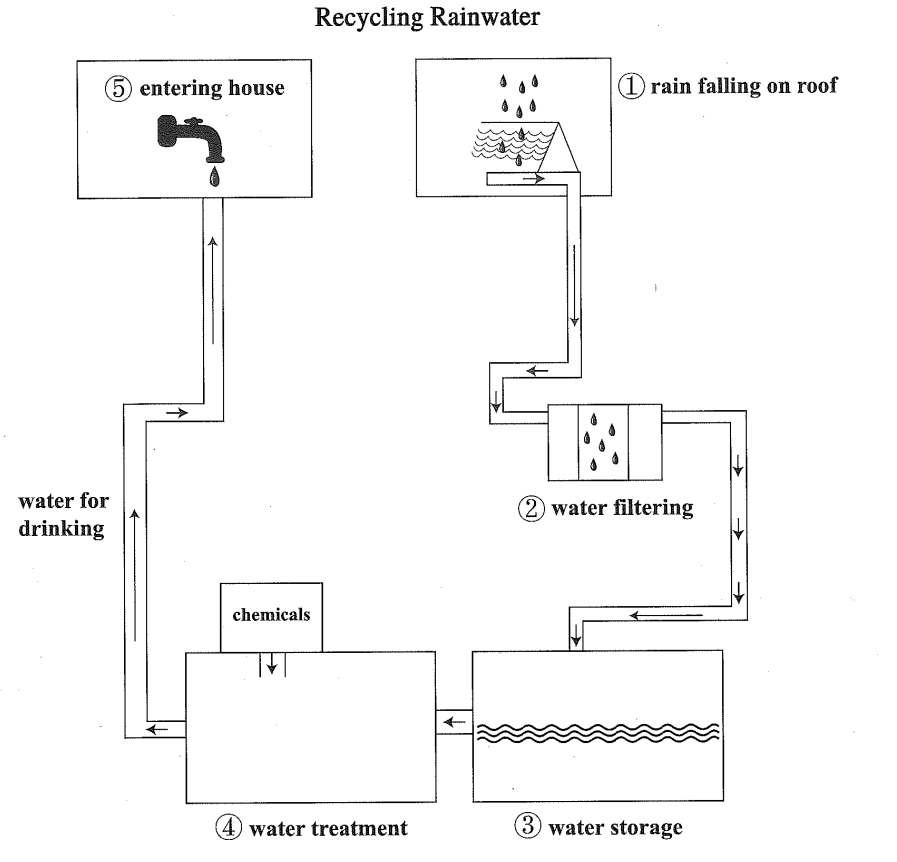Bài viết mô tả biểu đồ dạng hình ảnh | Writing Task 1
Uncategorised
Dạng mô tả biểu đồ là một trong những dạng bài khó nhằn nhất trong IELTS Writing Task 1. Thực sự thì bạn nào đi thi mà gặp loại này thì đúng là số chó =))
Nói vui thôi, chứ mọi thứ đều có công thức của nó, nhưng quan trọng các bạn phải chuẩn bị sẵn cho mình 1 nền tảng từ vựng thật tốt nhé.
Contents
- 1 Bài viết mô tả biểu đồ:
Bài viết mô tả biểu đồ:
Xét về hình dạng, thì chúng ta có thể chia nó thành 2 dạng chính:
- Biểu đồ tiến trình/phát triển (process diagram/flowchart): chủ yếu mô tả quá trình phát triển của một sự vật, quá trình tiến hành một công việc hay các bước cần thiết khi sử dụng 1 vật nào đó.
- Bản đồ (map): Chủ yếu mô tả vị trí địa lí hay sự thay đổi về vị trí địa lý của sự vậy nào đó.
Cách viết bài mô tả biểu đồ tiến trình:
Chúng ta sẽ hiểu về cách viết thông qua 1 đề thi IELTS Writing Task 1 chính thức năm trước luôn ha:
The diagrams below show the life cycle of the silkworm and the stages in the production of silk cloth. Summarize the information by selecting and reporting the main features, and make comparisons where relevant:
Bài mẫu:
The first diagram shows that there are four main stages in the life of the silkworm. First of all, eggs are produced by the moth and it takes ten days for each egg to become a silkworm larva that feeds on mulberry leaves. This stage lasts for up to six weeks until the larva pro-duces a cocoon of silk thread around itself. After a period of about three weeks, the adult moths eventually emerge from these cocoons and the life cycle begins again.The cocoons are the raw material used for the production of silk cloth. Once selected, they are boiled in water and the threads can be separated in the unwinding stage. Each thread is between 300 and 900 metres long, which means they can be twisted together, dyed and then used to produce cloth in the weaving stage.
Overall, the diagrams show that the cocoon stage of the silkworm can be used to produce silk cloth through a very simple process.
Cấu trúc bài viết:
- Đoạn 1: Căn cứ vào các mũi tên trong biểu đồ, người viết lần lượt trình bày các giai đoạn phát triển của tằm (bắt đầu từ điểm khởi đầu trong vòng đời của nó)
- Đoạn 2: Người viết mô tả trình tự các bước của quá trình tạo ra tơ lụa (bạn cần chú ý thể bị động và phân từ quá khứ được sử dụng ở giai đoạn này)
- Đoạn kết luận: Đoạn này chỉ ra mối liên hệ giữa hai biểu đồ.
Một số từ vựng lưu ý trong dạng bài:
| Nghĩa tiếng việt | Cách diễn đại trong bài viết | Mở rộng từ vựng |
|---|---|---|
| Biểu thị trình tự |
|
|
| mô tả khoảng thời gian trong đó một hành động hoặc quá trình diễn ra liên tục |
|
|
| Giai đoạn, quá trình |
|
|
Tham khảo thêm: Cách paraphrase trong IELTS Writing
Đề thi thực tế năm 2013:
The diagrams shows the process of recycling rainwater. Summarize the information by selecting and reporting the main features, and make comparisons where relevant.
Bài mẫu tham khảo:
The diagram demonstrates how rainwater is recycled.To begin with, rain falls upon a roof and is channelled into the guttering, where it drains into a water filtration system — commonly a net or mesh containing activated carbon, or even plain old charcoal from the barbeque. Once filtered for debris, such as leaves or dead insects, the water travels into a water storage tank, where it is held before treatment.
In the water treatment stage, the water is allowed to flow into a contained area where chemicals are added to remove any impurities. Following this, the water is deemed safe for drinking, and is returned to the water system, where it coincidentally ends up in the same house upon which the rain fell in the beginning.
Overall, the process of recycling rainwater is not only very simple and efficient, as the diagram shows, but also fundamentally important for a habitable environment.
Về căn bản, cách viết nó cũng giống như ở ví dụ 1 thôi:
- Đoạn 1: Giới thiệu ngắn gọn thông tin được thể hiện qua biểu đồ.
- Đoạn 2: Lần lượt mô tả các bước từ 1 tới 3 (theo mũi tên trong hình), tức từ giai đoạn thu gom đến giai đoạn tích trữ nước mưa.
- Đoạn 3: Tiếp tục mô tả bước 4 và 5, tức quá trình nước được xử lý để trở thành nước sạch và quay lại ngôi nhà.
- Đoạn kết luận: Nhận xét về toàn bộ biểu đồ: Quá trình tái sử dụng nước mưa là quá trình rất đơn giản và mang lại hiệu quả.
Đề 3 (28/10/2006): The diagram shows the structure of a smokehouse and the process of food smoking. Summarize the information by selecting and reporting the main features, and make comparisons where relevant.
Bạn nào đi thi mà gặp mấy đề này thì đúng là hơi mệt não ^^
Bài mẫu:
The diagram shows plans for a smokehouse, a kind of cooking shed, wherein food can be smoked and preserved.The project requires three holes to be dug and connected through underground piping; one for an air intake, one for the fire and one for the smoke itself, which runs up into a wider area and is diffused by a loose brick flooring. The air intake and fire are covered by movable lids and a well-sealed structure is placed over the chimney.
First, food (in this case, fish) is placed in the smokehouse, then a fire is made and subse-quently covered. The air intake is now lifted, both providing oxygen to the covered fire and blowing its smoke through the piping and up into the smokehouse itself. After a certain period of time, the food is ready to be brought back inside the house, to last through the cold winters of these people.
Một số từ vựng lưu ý:
| Nghĩa tiếng việt | Cách diễn đại trong bài viết | Mở rộng từ vựng |
|---|---|---|
| Giữ gìn |
|
|
| Truyền |
|
|



